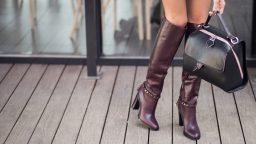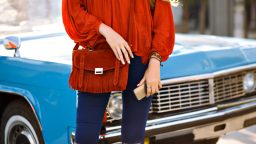Shopping for vintage and pre-owned luxury items has become an increasingly popular way to add rare and unique pieces to your wardrobe. Not only can buying second-hand luxury offer exceptional value, but it also promotes sustainability by extending the life of high-quality goods. However, navigating the world of vintage and pre-owned luxury can be tricky—how do you ensure you’re getting authentic items, and how can you spot a good deal? Here are the secrets to shopping vintage and pre-owned luxury items like a pro, ensuring you get the best value and avoid common pitfalls.
- Understand What You’re Looking For
Before diving into the world of pre-owned luxury shopping, it’s essential to know exactly what you’re looking for. Whether it’s a classic Chanel bag, a vintage Rolex, or an iconic Hermes scarf, understanding the item’s history and what makes it special will help you recognise quality pieces when you find them.
- Know the Brand’s Signature Styles: Different luxury brands have distinctive designs that set them apart. For example, Chanel bags are often recognised by their quilted leather and iconic interlocking ‘CC’ logo, while Louis Vuitton’s monogram canvas is instantly recognisable. Familiarising yourself with these signature features will help you assess the authenticity of a piece.
- Research the Item’s Market Value: Knowing the average price range for a specific item will help you determine if you’re getting a good deal. Luxury goods tend to hold their value, and some pieces even appreciate over time. For instance, vintage Rolex watches and classic Chanel bags often increase in value, especially if they are rare or in excellent condition.
- Shop from Trusted Sources
One of the most important aspects of buying pre-owned luxury items is ensuring their authenticity. To reduce the risk of purchasing counterfeit goods, it’s crucial to shop from reputable sources. Here are some trusted places to look for vintage and pre-owned luxury:
- Certified Resellers: Many luxury brands now have partnerships with certified resellers or online platforms. Websites like The RealReal, Vestiaire Collective, and Farfetch are known for curating high-quality pre-owned luxury items. These platforms often authenticate items before selling them, giving buyers added peace of mind.
- Vintage Boutiques: Some brick-and-mortar stores specialise in selling vintage luxury items. These boutiques often employ experts who can assess the authenticity and condition of items before they’re sold.
- Auction Houses: For rare or high-value pieces, auction houses like Sotheby’s and Christie’s can be a great option. These institutions often auction off pre-owned luxury items, and they provide detailed documentation and expert authentication.
- Pay Attention to Condition and Provenance
When buying vintage or pre-owned luxury, the condition of the item is crucial. Vintage items, especially those that are several decades old, can show signs of wear and tear. The key is to find a balance between age, condition, and price.
- Signs of Wear: Look for signs of use, such as scuff marks, tarnished hardware, or fraying fabric. While some vintage wear can add character, be wary of pieces that are too worn down or damaged beyond repair. It’s important to factor in the cost of any potential repairs when deciding if a piece is worth purchasing.
- Check the Provenance: Provenance refers to the history of an item, including previous owners and where it has been stored. Items with a known history tend to retain higher value. Many luxury goods come with their original dust bags, boxes, and certificates of authenticity—these can significantly increase an item’s value.
- Look for the Right Age and Rarity
One of the attractions of vintage luxury shopping is finding rare or discontinued items that are no longer available in stores. These rare pieces can often be the most valuable, especially if they’re in excellent condition. When shopping for vintage or pre-owned luxury, keep an eye out for:
- Discontinued Designs: Items that are no longer in production or have been replaced with newer versions can be particularly valuable. For example, older models of Louis Vuitton bags or vintage Hermès scarves are often considered collector’s items.
- Limited Editions: Luxury brands frequently release limited-edition pieces that are highly sought after. These can often be found on resale platforms, but their rarity can drive up the price. Be prepared to do some research to assess the value of these limited-edition items.
- Classic Pieces: Classic luxury items, such as Chanel’s 2.55 handbag or the Louis Vuitton Speedy, are always in demand. These iconic pieces are timeless and can be found on the pre-owned market at a fraction of their original price, making them a smart investment.
- Understand the Pricing
One of the main reasons people opt for pre-owned luxury is the potential for savings, but that doesn’t mean all second-hand luxury items are bargains. When shopping vintage and pre-owned, you’ll want to ensure you’re paying a fair price for the item’s condition and rarity.
- Know the Retail Price: Familiarise yourself with the retail price of the item when new. This helps you assess whether the asking price is reasonable based on the item’s condition and market demand. If the price is too low, it could be a red flag—possibly indicating a counterfeit or damaged item.
- Factor in Repair Costs: If a vintage piece shows signs of wear and needs restoration, you’ll need to consider the cost of repairs when evaluating its price. High-quality repairs, such as replacing the lining in a handbag or polishing a watch, can add value and make an item look as good as new.
- Don’t Overpay for Vintage: While vintage luxury items can be more expensive than their contemporary counterparts, make sure you’re not paying more than the market value. Keep an eye out for any inflated prices based on an item’s perceived rarity or brand appeal.
- Check for Authenticity
When purchasing pre-owned luxury, the risk of encountering counterfeit goods is always a concern. Thankfully, there are several ways to verify authenticity before committing to a purchase:
- Authentication Certificates: Many pre-owned luxury retailers provide certificates of authenticity for their items. If the seller doesn’t offer one, consider paying for third-party authentication through services like Authenticate First or Real Authentication.
- Inspect the Details: Luxury items are crafted with precision, so check the small details like stitching, logos, serial numbers, and hardware. Poor craftsmanship is often a sign of a counterfeit. Many luxury brands also stamp their items with unique serial numbers or holographic tags that can be traced back to the manufacturer.
- Consult Experts: If you’re ever in doubt, consider consulting an expert who specialises in luxury goods. Many vintage boutiques or online platforms offer authentication services, ensuring peace of mind when purchasing high-ticket items.
- Be Patient and Strategic
The world of vintage and pre-owned luxury can be overwhelming, but one of the most important tips is to be patient. Don’t rush into a purchase because you feel pressured by price or scarcity. Take your time to research, inspect, and compare prices from different sources. By being strategic and patient, you can find the perfect piece that fits both your style and budget.
Conclusion
Shopping for vintage and pre-owned luxury can be a rewarding and exciting experience, offering access to timeless pieces and unique finds. By knowing what to look for, researching reputable sources, and being mindful of condition, authenticity, and pricing, you can make smart choices and build a collection that is both valuable and stylish. Whether you’re on the hunt for a rare designer handbag, a vintage watch, or an iconic piece of jewellery, these secrets will help you navigate the world of pre-owned luxury with confidence and ease.





